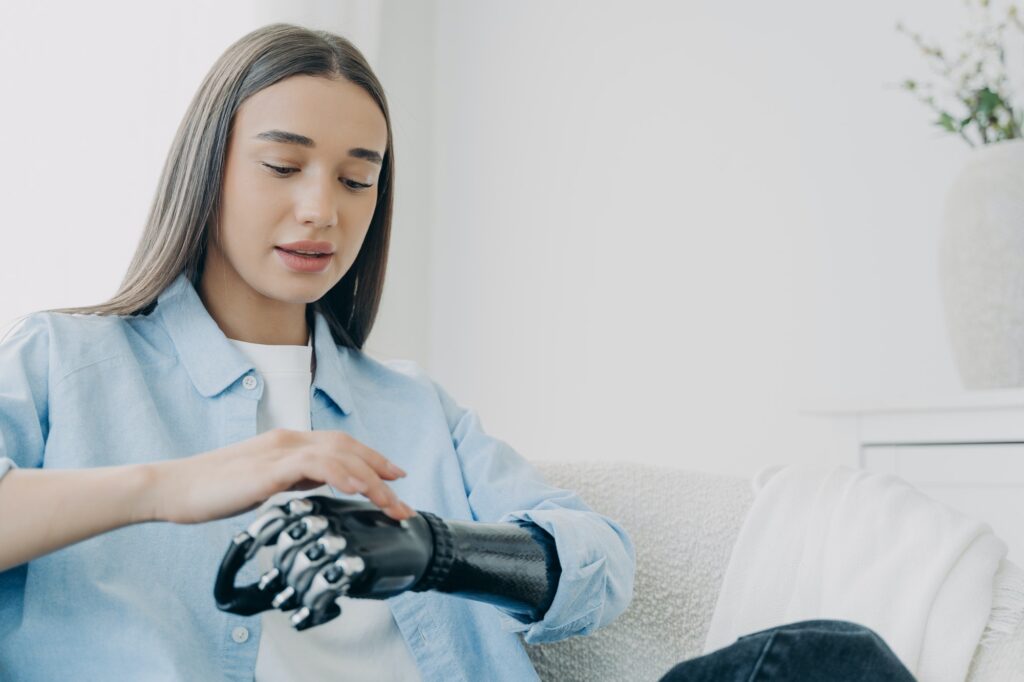Artificial intelligence (AI) is transforming the world in unprecedented ways. From health care to education, from business to entertainment, AI is enhancing our capabilities and creating new opportunities. But how can we ensure that AI is used for good and not evil? How can we balance the benefits and risks of this powerful technology? And how can we foster a collaborative relationship between humans and AI, rather than a competitive or adversarial one?
In this article, we will explore some of the ways that humans and AI can work hand in hand, based on the latest research and expert opinions. We will also highlight some of the challenges and best practices that can help us achieve a harmonious and productive partnership with AI.

AI and humans can complement each other’s strengths
One of the key advantages of AI is its ability to process large amounts of data, perform complex calculations, and learn from patterns and feedback. This can enable AI to perform tasks that are difficult, tedious, or impossible for humans, such as detecting diseases, analyzing markets, or optimizing systems.
However, AI is not a substitute for human intelligence, creativity, judgment, and empathy. Humans can provide context, meaning, and values to the data and decisions that AI generates. Humans can also leverage their intuition, imagination, and emotional intelligence to solve problems, generate ideas, and communicate effectively.
Therefore, rather than seeing AI as a threat or a replacement, we can see it as a tool or a partner that can augment our abilities and extend our reach. By combining the strengths of both human and AI, we can achieve outcomes that are greater than the sum of their parts.
For example, in health care, AI can help diagnose diseases, recommend treatments, and monitor patients, while human doctors can provide personalized care, emotional support, and ethical guidance. In education, AI can help customize learning, assess progress, and provide feedback, while human teachers can inspire curiosity, foster collaboration, and nurture creativity. In business, AI can help automate processes, optimize operations, and generate insights, while human workers can innovate products, manage relationships, and lead teams.
“Human versus machine is a common narrative. While it’s true that the risks are real and must be addressed, we believe Humans with Machines, and the power of technological augmentation, has the potential to elevate the human experience in ways we previously couldn’t imagine.”
– Nitin Mittal, global AI leader, Deloitte Consulting LLP
AI and humans can learn from each other
Another way that humans and AI can work hand in hand is by learning from each other. AI can learn from human feedback, preferences, and behavior, and adapt accordingly. Humans can learn from AI outputs, explanations, and suggestions, and improve accordingly.
For this to happen, however, we need to ensure that AI is transparent, interpretable, and accountable. We need to understand how AI works, why it makes certain decisions, and what are the consequences of those decisions. We also need to ensure that AI is aligned with our goals, values, and expectations, and that it can be corrected or overridden when necessary.
On the other hand, we also need to ensure that humans are aware, informed, and responsible. We need to understand the limitations, assumptions, and biases of AI, and how they can affect our own judgment and behavior. We also need to ensure that we use AI for good purposes, and that we respect the rights, dignity, and autonomy of other humans and AI agents.
For example, in journalism, AI can help generate content, verify facts, and identify trends, while human journalists can provide context, analysis, and commentary. However, both AI and humans need to be transparent about their sources, methods, and motives, and accountable for their accuracy, quality, and impact. They also need to learn from each other’s feedback, corrections, and perspectives, and improve their performance and credibility.

AI and humans can create and innovate
A third way that humans and AI can work hand in hand is by creating and innovating together. AI can help generate, evaluate, and refine ideas, products, and services, while humans can provide vision, direction, and feedback. Humans can also use AI as a medium, a platform, or a source of inspiration for their own creative and innovative endeavors.
For this to happen, however, we need to ensure that AI is flexible, diverse, and generative. We need to ensure that AI can explore, experiment, and improvise with different possibilities, and that it can produce novel, diverse, and high-quality outputs. We also need to ensure that AI can support, stimulate, and challenge human creativity and innovation, and that it can respect and acknowledge its human and AI co-creators.
On the other hand, we also need to ensure that humans are curious, adventurous, and appreciative. We need to ensure that we can explore, experiment, and improvise with different possibilities, and that we can appreciate and leverage the novelty, diversity, and quality of AI outputs. We also need to ensure that we can support, stimulate, and challenge AI creativity and innovation, and that we can respect and acknowledge our AI and human co-creators.
For example, in music, AI can help compose, perform, and remix songs, while human musicians can provide style, expression, and emotion. However, both AI and humans need to be flexible, diverse, and generative in their musical choices, and respectful and appreciative of their musical partners. They also need to support, stimulate, and challenge each other’s musical creativity and innovation.
The Future of Human-AI Collaboration
In this article, we have explored some of the ways that humans and AI can work hand in hand, based on the latest research and expert opinions. We have seen that AI and humans can complement each other’s strengths, learn from each other, collaborate and cooperate with each other, and create and innovate together. We have also highlighted some of the challenges and best practices that can help us achieve a harmonious and productive partnership with AI.
However, this is not the end of the story. As AI continues to evolve and advance, so will the opportunities and challenges for human-AI collaboration. We need to keep pace with the changing landscape of AI, and adapt our skills, mindsets, and behaviors accordingly. We also need to keep in mind the ethical, social, and environmental implications of our actions, and ensure that we use AI for good and not evil.
Ultimately, the future of human-AI collaboration depends on us. How will we shape it? How will we benefit from it? And how will we share it with others? These are the questions that we need to ask ourselves, and each other, as we embark on this exciting and uncertain journey.





